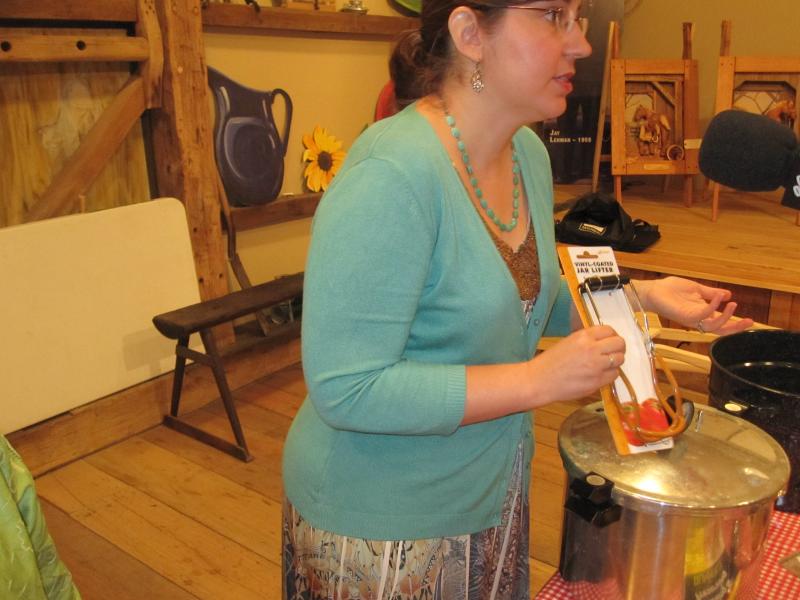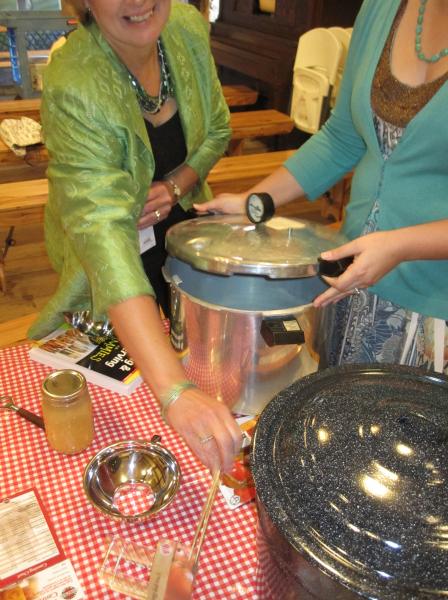Doing it wrong can be catastrophic. Clostrinium botulinum, the bacteria that causes food poisoning, can be deadly.
So when the phone rings at the Ohio State University extension offices in Holmes and Wayne counties, family consumer science educators Kate Shumaker and Melinda Hill often hear… panic:
"Very often. Typically the calls that we get are not the person who is planning to do this, but the person who is right in the middle of it and has just realized that they had forgot an ingredient or they don't have the right equipment. Or they did the canning last night or the day before and now they're saying, 'I don't know if I did that right.' and they're calling us to find out. Is it always better to be safe than sorry in this matter? Absolutely, because there is a measure of food safety that we have to be aware of. So when in doubt make sure that you find out the correct answer. Call your local extension office." 
Hill says you can call anytime for canning advice, not just in emergencies.
"We get phone calls on a daily basis of how to process a particular recipe. So, if I' m going to be doing green beans, ‘How many, or how do I do that in a pressure canner?’ Or if I want to do a salsa, ‘Can I do that in a boiling-water bath?’ And what are the ingredients that I need to have in that recipe to make sure that it's a safe product for my family?"
 Hill says fruits can be preserved in a boiling water bath. Hill says fruits can be preserved in a boiling water bath.
"That is what we use for any of our high acid foods, So any of our fruits, anything that we add vinegar to, such as your salsa or pickles or pickled vegetables. We can use that in a boiling water bath canner." 
So Bell or Mason jars filled with fruit can sit on a rack on the bottom of the canner.
"I can put the jars in here. I put it in the canner and what happens is, I need water to come about an inch and a half on top of the jars to be able to process my canner load.”
How long do you boil it? For that you need a recipe. And Hill says it better be a good one.
"There are a variety of sources out there but make sure that it's one that has approved times and temperatures for our canning. The internet is wonderful. There's lots of recipes out there. But there's also a lot of misinformation. So that's one of our messages as we go out: to make sure that you're using recipes that have been tested tried and true."
The boiling water bath works for fruits or foods with high enough acid levels. But vegetables need to be processed at temperatures higher than water’s boiling point, so you need a pressure canner.
Shumaker brings out one that looks a lot like a big old heavy pot like grandma used to have, black with white specks. 
"This is actually a pressure canner that someone dropped off last week to test. And we tested the accuracy of the dial gauge on it. And with a pressure canner you will still have a rack to put your jars on, but then you will put the lid on, and tighten it down so there's a good seal on it, a good tight seal.
"And we'll heat it up and let steam escape out of this vent for about 10 minutes to exhaust the air out of the canner and build a pure steam environment. So after I let it exhaust, I'll cover the vent and let it build pressure and let it reach that 240 or 260 degree temperature, 10 or 15 pounds of pressure that Melinda talked about."
Timing is everything here. You don’t want to pick the fruit or veggies before they are ripe, and don’t try to preserve them if they are overripe. And when you open canned or jarred vegetables, you’ll want to boil the contents for 15 minutes before you taste. Fruit, you can just open up and eat.
But before tasting anything, Hill says you need to look, sniff, and listen.
"Discoloration, odor, make sure that the old mantra of ‘When in doubt, throw it out’ will prevail. If by chance when you're opening it you don't hear a nice suction sound, if you don't hear that or something very similar, then you don't have a good seal and the food would not be safe to eat." 
As a community service, Glenda Lehman of Lehman’s Old Time General Store in Kidron brings in the OSU extension educators often to teach free classes on canning and preserving, and to test equipment that may have been found in grandma’s garage or basement. 
“So we're taking the skills that great-grandma knew and teaching them to 20- and 30 year-olds who are going to community-supported agriculture areas, farmers markets, planting small gardens, container pots, that kind of thing. And for us it's very exciting that these old time skills are not being lost."
Jean Geiser runs Lehman’s Hardware Department. She says some come in to buy canners because they have sodium or other dietary restrictions. They need to know exactly what’s in their food.
"Also the taste. We have grandsons that their mother doesn't can, and they'll always want to come over and get what grandma makes, y'know in the jar. The taste is different. People don't always know the difference and then they taste it and think, ‘Why is this so different?’ Well, it's not over-processed, No. 1,if you're doing it correctly and once again you have your ingredients. You know what's in it and it's just really great." |